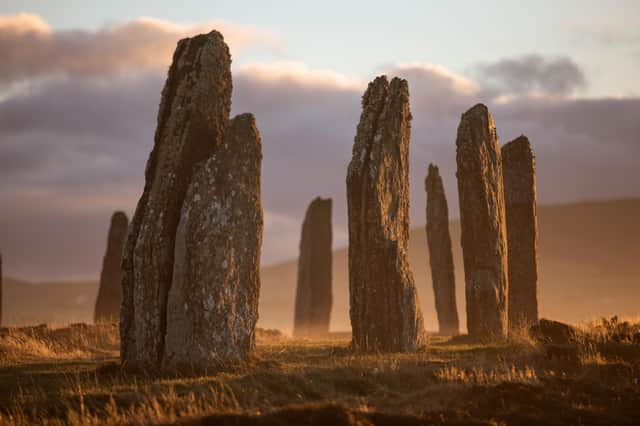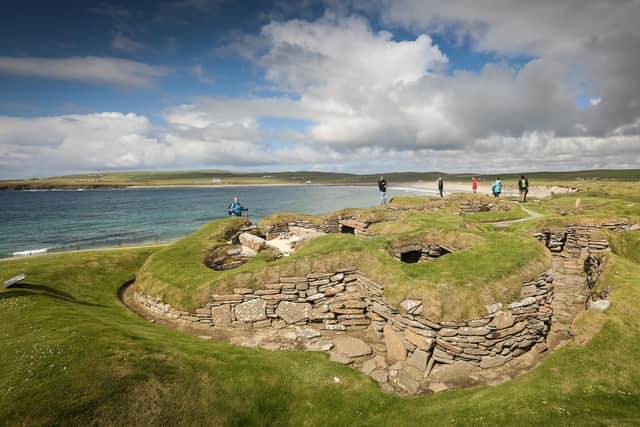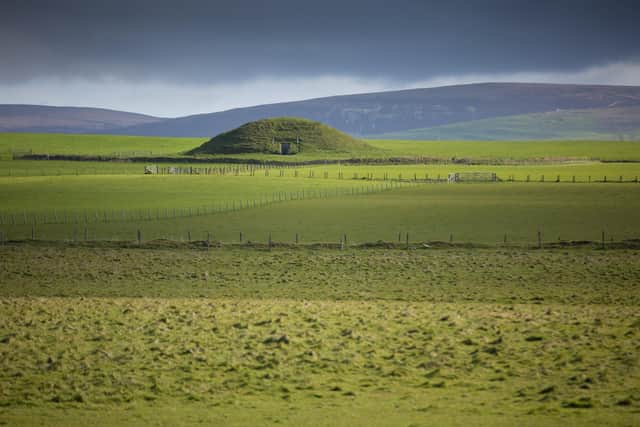Visit Neolithic Orkney and Discover 5,000 Years Of History


In Orkney, you will find some of the most important remnants of our Neolithic ancestors in the world.
This ancient landscape, dotted with remains that predate the building of Stonehenge in many places, offers a deep and lasting impression of the ways of the ancients.
Visit these sites and you will connect directly with the way people lived, the way they worshipped and the way they showed power and influence.


There are truly few places like it with a tour of the Heart of Neolithic Orkney, a UNESCO World Heritage Site, both magical and moving as our Stone Age ancestors are brought to life by what they left behind.
Some of the sites have been exposed through time by shifting sands and changing coastlines. Other important landmarks have been discovered within the last 20 years as archaeologists continue to dig deep into the timeline of the islands. What has been revealed is simply unforgettable.
A natural starting point in the discovery of Neolithic Orkney is Skara Brae, the settlement built at the Bay of Skaill on the north of the mainland.
On the road there, you will pass two key stone circles, first the giant Stones of Stenness and then the formidable Ring of Brodgar. As much as it is tempting to stop, keep pushing through this low lying land and you will reach the extremely well preserved village that was submerged down by the shore around 3,180 BC and occupied for 600 years.


Here the domestic life of the farmers, hunters and fishermen who called Skara Brae home is brilliantly illuminated.
Walk through the incredibly well-preserved passageways and houses to find relics of the ancient past, including stone box beds - built in different sizes to fit old and young and draped in animal skins for warmth - and stone dressers, where precious and useful objects would have been stored.
Items such as whalebone bowls, paint pots made from shell and necklaces of teeth - perhaps those of a wolf - help vividly paint the picture of the people of Skara Brae. Look out over the water and you start get to a sense of time and place - and a sophisticated, skilled set of people.
With this in mind, head back down the B9055 through the rich and fertile lands that Orkney's Neolithic people farmed. Probably drawn over the treacherous Pentland Firth from the Scottish mainland by the mild climate and kinder growing conditions, it is known that they grew barley and wheat here from around 4,000 BC, with cows and pigs also reared.
As you travel this road, the landscape re-calibrates to how it must have appeared during the Stone Age. Next you'll reach the Ring of Brodgar, an astonishing ring of standing stones that rise up on the thin strip of land that separates the Loch of Harray and Loch of Stenness.
Here, people gathered for rituals and celebrations - likely linked to worship of the dead - from around 2,500 BC.
The spectacle must have been immense with the site sitting in a natural amphitheatre cusped by ridgelines of surrounding islands and hills, where people may have gathered on the surrounding ridges to witness events from afar.
Today, 21 stones currently stand, but up to 60 may have been originally cut and placed here. The stone is likely to have been brought from quarries six miles away in a mighty endeavour of physical strength and spiritual determination.
Move just south to the Ring of Brodgar and you'll find the site of one of the most mindblowing archaeological discoveries of recent time at Ness of Brodgar, on the thin strip of land that separates the two lochs.
Here, an incredible network of temple-like buildings was first found 20 years ago with annual summer excavations continuing to piece together this vast ceremonial centre that would have dominated the Ness.
Occupied from around 3,200 BC, it included up to a hundred separate buildings within a monumental walled enclosure.
Built to impress, this was a place of riches and power, with the finest Stone Age furniture and probable altars found within its walls and inner sanctum.
Evidence of a huge feast ceremony held about 2,300 BC has also been found. Up to 600 cows may have been eaten at the event, after which the Ness of Brodgar complex was effectively abandoned.
The Ring of Brodgar and the Ness of Brodgar clearly point to a landscape of deep importance to our Stone Age ancestors. Just minutes away, you will find another key part of the story of Neolithic Orkney - the Stones of Stenness.
Visible for miles around, the stones stand at a mighty six metres tall. Only four of the megaliths remain with the stone circle dating from 3,100 BC, making it one of the earliest stone circles in Britain and older than its neighbour, the Ring of Brodgar.
Lovers are said to have later visited the Stones of Stenness to pray to the God of Wodden that they would keep their oaths to each other, with a similar ritual carried out at the Ring of Brodgar and the nearby Odin Stone, where the pact would be finalised.
The Stones of Stenness are believed to be the worship place of those who lived at the Barnhouse Settlement, which sits around 150 metres north of the stone circle.
Here, evidence of 15 small free-standing round houses, likely to have been fitted with timber and turf roofs, have been found along with the remains of a large Neolithic hall.
At the centre of the settlement was an open area in which villagers made pottery and worked flint, bone and animal hides.
The village would have been lived in at the same time as Skara Brae, although Barnhouse was left behind around 450 years earlier with each building intriguingly demolished as it was abandoned. A scatter of artefacts suggests that the settlement was far bigger than what we know now.
From Barnhouse, head back onto the main road towards Stenness and you will come to the visitor centre of Maeshowe Chambered Cairn. What happens next is possibly one of the finest experiences you will have on the tour of the Heart of Neolithic Orkney.
A bus will take you on the short trip to the chambered burial tomb, a stunning piece of Neolithic architectural genius that was built both in honour of the dead and the power of the solar calendar.
A guide will take you into the tomb, which is reached by a low slung passageway that opens out into the main chamber. The whole place was designed and positioned so that the setting sun on Winter Solstice would shine up the passageway and illuminate inside, where those who died in the community were laid to rest.
Further still, the nearby Barnhouse stone is perfectly aligned to the dipping sun over the hills of Hoy on this most important day.
The significance of this powerful monument has long been debated. As the midwinter sun wanes and the longer days return, some believe the sun coming into the tomb symbolises the continuing life of those who were laid to rest here.
The rebirth of the sun may also reflect the rebirth of those who had gone. Others believe the shaft of sunlight that entered the tomb carry the souls of the dead.
Perhaps it was more simple than that, with the sun shining into the important monument of Maeshowe simply to celebrate the passing of the darkest time of year.
The extraordinary experience vividly illustrates the culture, the skills, the ingenuity and the beliefs of those living on Orkney at the time.
To tread in their footsteps is an unforgettable experience, and pulls Orkney's ancient past and its people much, much closer. Suddenly, this distant time doesn't feel so distant at all.
For further information, and to follow Destination Orkney’s new World Heritage Orkney itinerary, click here.